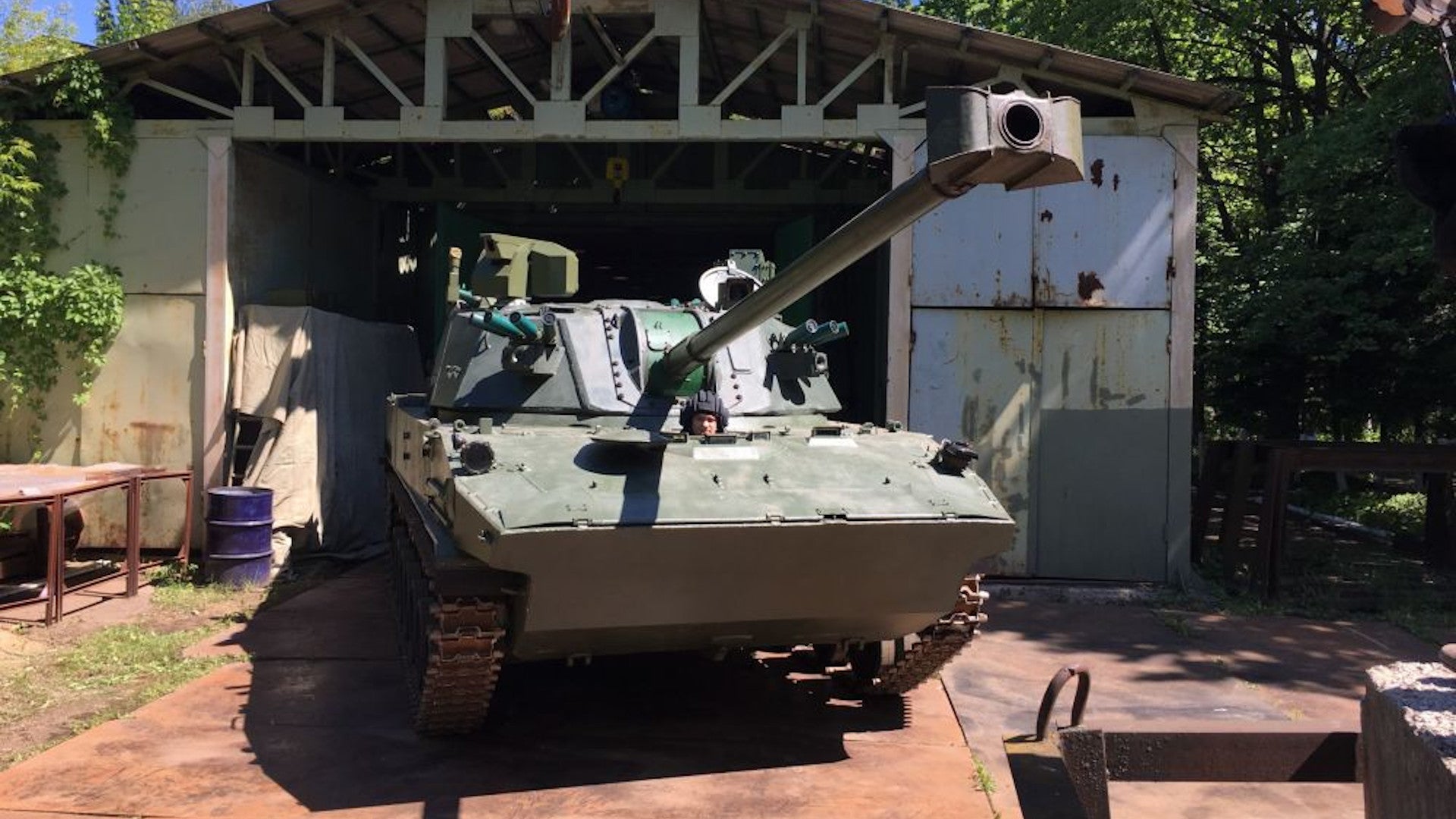Russia says it is about to start drop tests of a new tank-like 120mm gun-mortar for its airborne units. The 2S42 Lotos, or Lotus, is set to supplant a similar Soviet-era vehicle and follows an earlier, abortive development program that was supposed to produce a replacement that would have entered service this year. This light self-propelled artillery piece is a derivative of earlier air-droppable assault gun and infantry fighting vehicle designs and is part of a larger Russian effort to modernize the armored vehicle capabilities of its airborne forces.
On Nov. 6, 2019, Ivan Androsov, CEO of the Moscow Design and Production Center Universal, a division of the Russian state-owned Technodinamika holding company, announced that his firm would conduct the dynamic drop testing of the 2S42, according to state media outlet TASS. The Central Scientific Research Institute for Precision Machine Engineering, also known by its Russian acronym TsNIITochMash, is leading the development of the Lotos. Both Technodinamika and TsNIITochMash are themselves subsidiaries of Russia’s main state-run industrial conglomerate, Rostec.
“Universal is currently taking part in this R&D work,” Androsov explained to TASS. “We have made a set of the landing system for this gun to confirm the possibility of air-dropping this weapon and are planning to hold dynamic drop tests before the end of the year.”
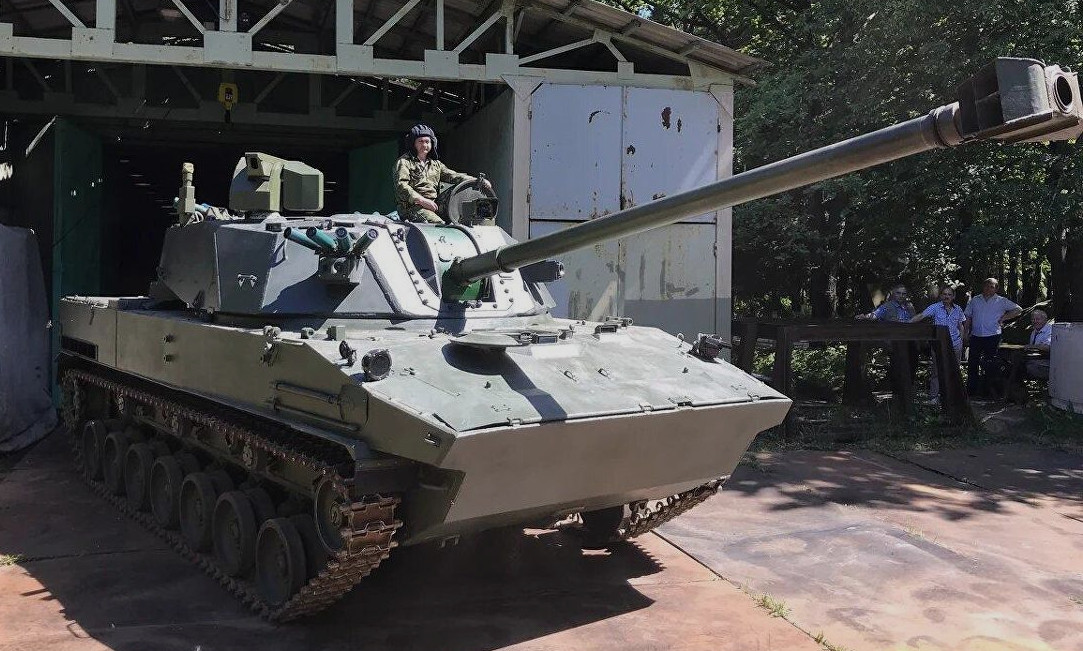
The 2S42 is mounted on a lengthened derivative of the chassis from the existing BMD-4M air-droppable infantry fighting vehicle, which is also used for the 2S25 Sprut-SD assault gun. The BMD-4M chassis only has five roadwheels on each side, while the Lotos and Sprut-SD have seven.
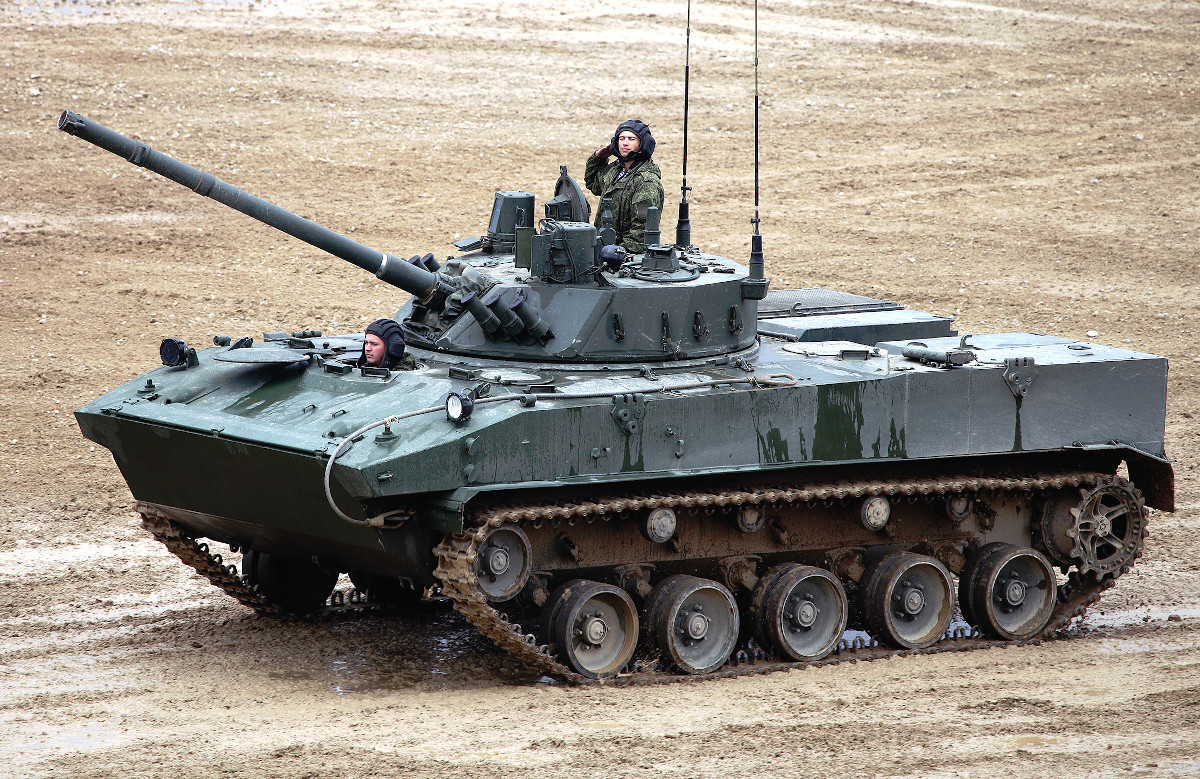
All of these vehicles have an adjustable suspension system that makes them more compact for airdrops and can help with getting over obstacles once they are on the ground. The drop testing will be critical for determining if the vehicle and its suspension can handle the shock of landing after getting parachuted out of a cargo aircraft.

TsNIITochMash says that the Lotos, which it formally unveiled to the public at the Army 2019 exhibition at the Patriot Park military theme park in Kubinka outside of Moscow in June 2019, weighs approximately 18 tons, nearly four and a half tons heavier than the BMD-4M. The 2S42’s 450 horsepower diesel engine can reportedly propel the vehicle up to a maximum speed of nearly 43 and a half miles per hour on improved roads.
The Lotos also has a much larger turret than the BMD-4M. The 2S42’s main weapon is the contains the 120mm 2A80-1 gun-mortar. This weapon has reportedly been in Russian service with regular ground forces since at least 2011 on the 2S34 Hosta, which shares the same chassis as the 2S1 Gvozdika 122mm self-propelled howitzer. The Lotos also has a machine-gun armed remotely operated weapon station so the crew can engage secondary targets from within the safety of the armored hull, as well as smoke grenade launchers to help conceal the vehicle if necessary.
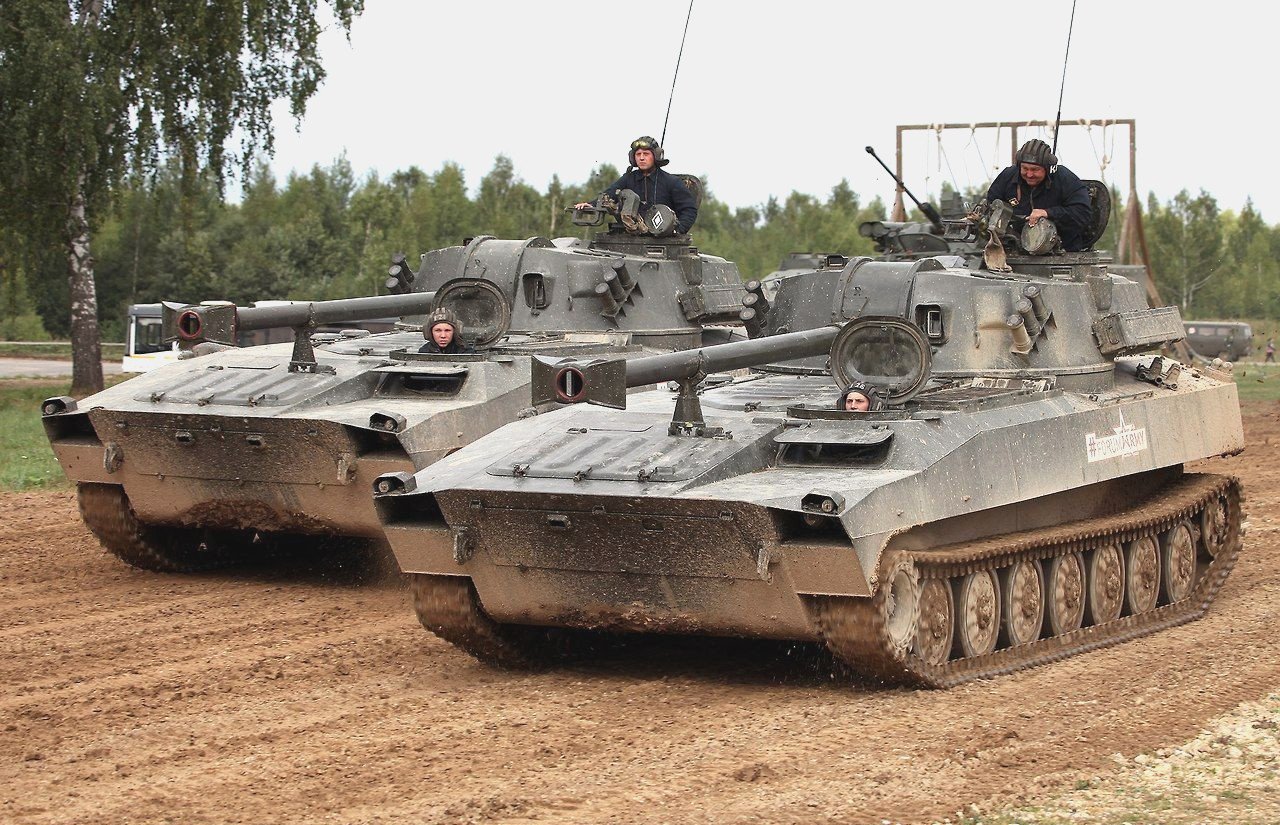
Gun-mortars are, as the name suggests, hybrid weapons that straddle the definitions of conventional main guns on armored vehicles and traditional mortars. Most commonly found on vehicles, they offer an artillery piece that is far lighter than traditional howitzers, but with better range than similarly sized standard infantry mortars.
They also provide better direct-fire capabilities than typical mortars, which are generally restricted to high-angle indirect fire, too. As such, Russia has developed a wide array of ammunition for the 2A80-1 to suit both indirect and direct fire applications and the gun-mortar can reportedly fire the laser-guided Kitolov-2M round. The Lotos’ main role is still indirect fire missions, though, with the Sprut-SD, which packs a 125mm main gun similar to the ones found on Russian main battle tanks, providing a more robust ability to take on heavier armored vehicles and fixed targets.
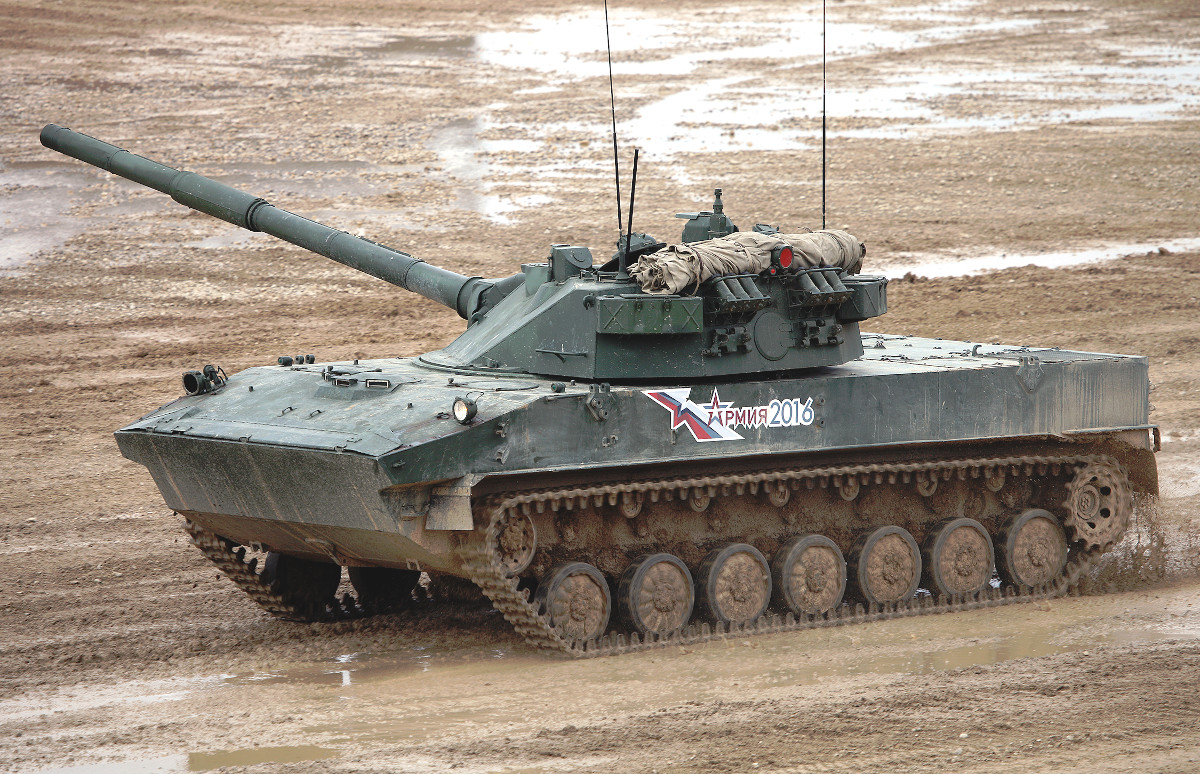
For airborne forces who rely heavily on the vehicles and other equipment that they can bring with them in the initial stages of an assault, a design such as the 2S42 still provides valuable and flexible added firepower, both as an artillery piece and a lighter assault gun. The Russian Army, and the Soviets before them, had recognized this and had introduced the 120mm 2S9 Nona self-propelled gun-mortar back in 1981. This design utilized a modified version of the chassis from the BTR-D armored personnel carrier, which was itself based on the earlier BMD-1 airborne infantry fighting vehicle.
Russia has been trying to replace the 2S9 since at least 2015. That year the country revealed it was working on the 2S36 Zauralets. Previously reports conflict about the exact configuration and capabilities of this vehicle, with Russian officials saying that it would be available armed with both 120mm and 152mm weapons. The 2S36 was also reportedly going to be based on the BMD-4M.
The Kremlin suspended work on Zauralets in 2016 and subsequently shifted its focus to the 2S42. There is no mention at this time of a 152mm version, which could require the development of a new, larger gun-mortar or some sort of lightweight, low-recoil howitzer.
A model of the Lotos emerged the following year. Leveraging the existing chassis and main weapon certainly give the Lotos the appearance of a lower-risk, and potentially lower cost, project. The hope now is for the vehicle to complete all the necessary tests by the end of this year so it can begin entering service sometime in 2020.
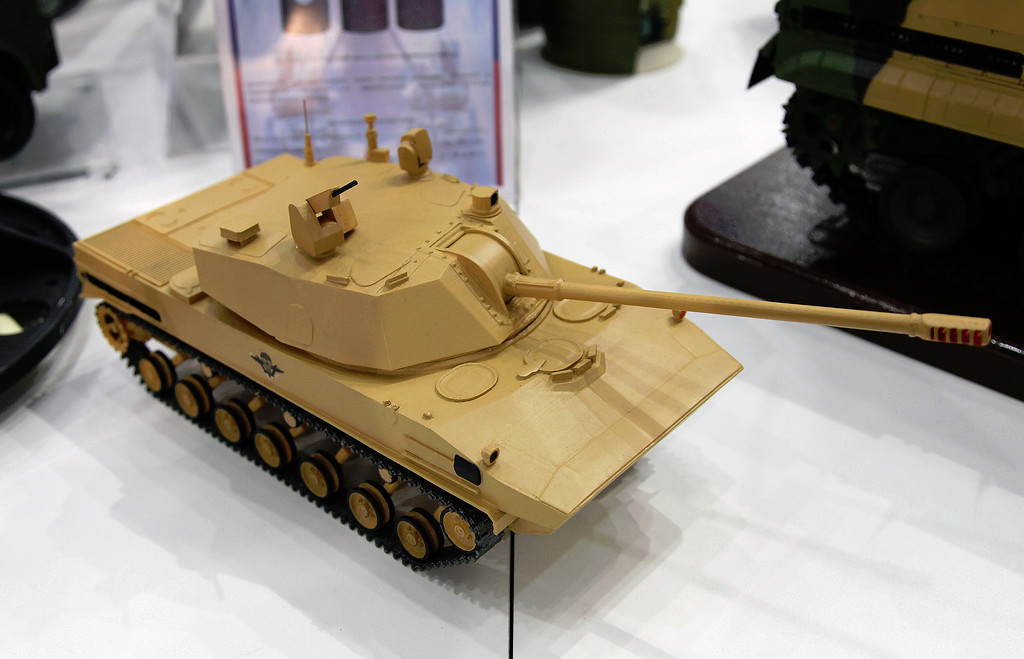
The 2S42 is part of a broader modernization effort aimed at expanding the capabilities of air-droppable armored vehicles available to Russian airborne units. This also includes the development of the Sprut-SDM1 variant, which will reportedly carry the improved 2A46 125mm main gun, the same one found on early models of the T-90 main battle tank, as well as other upgraded full-size Russian tanks, such as the T-72B3 and T-80BVM.
This mirrors similar developments within the U.S. Army, which is also looking to a new light tank to equip its airborne units and a turreted gun-mortar system to go on a future variant of its Stryker 8×8 wheeled vehicle family. Last year, the 82nd Airborne Division began receiving a small number of second-hand 8×8 LAV-25A2 light wheeled armored vehicles from the U.S. Marine Corps to provide an interim air-droppable armored vehicle capability.
With any luck, Russian airborne units may be getting close to finally receiving a replacement for their Cold War-era 2S9s in the new year.
Contact the author: joe@thedrive.com
